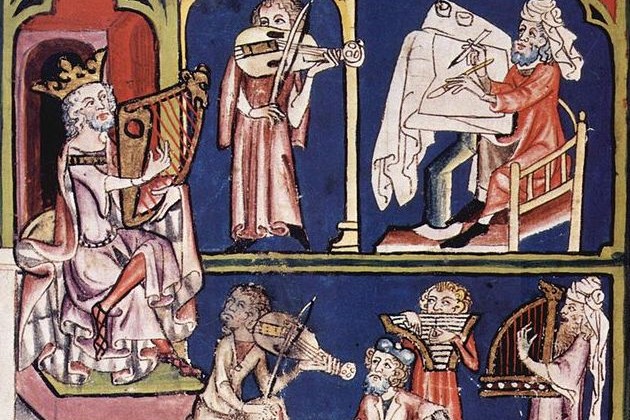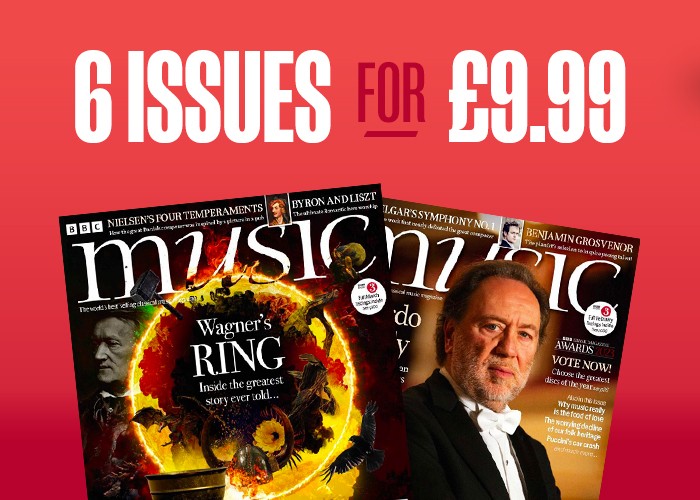10 medieval musical instruments
Our guide to some of the most important instruments of the medieval period

Although some instruments of the medieval period remain familiar to us, there are many that have been lost in the mists of time.
What, for example, was the gemshorn? How exactly did one play the portative organ? Here is our guide to both, along with many of the important instruments that co-existed with them during the medieval period.
Medieval musical instruments
1. Vielle
This bowed string instrument was one of the most popular instruments of the medieval period, often used by troubadours and jongleurs from the 13th through the 15th century. Similar in shape to a modern-day violin, but with a longer, deeper body, it had three to five gut strings and a leaf-shaped pegbox with frontal tuning pegs.
2. Lute
The name of this plucked, multi-stringed instrument is derived from its Arabic predecessor 'al-'ud' ('the wood'), which came to Spain and Sicily through conquest during the Middle Ages.
From these regions it travelled it to the rest of Europe, including Germany, where, by the beginning of the 15th century it had taken on a somewhat evolved form: with frets added to the fingerboard and a shorter neck.
Although no lutes survive from the medieval period, the instrument is depicted in many manuscript illustrations as well as drawings, paintings and sculptures from the period.
3. Psaltery
This harp-like string instrument - widely seen in medieval paintings, manuscripts and sculptures - consisted of plucked gut strings, stretched across a flat soundboard.
Probably Middle Eastern in origin, it reached Europe in the 12th century and evolved into different shapes, including the 'boar's head'. Among its descendants are the harpsichord, the harp and the dulcimer, which is struck with hammers rather than plucked.
4. Sackbut
This early version of the trombone was invented - most likely in Burgundy - in the 15th century. Possessing the characteristic slide of the trombone, but with a narrower bell and softer tone, it was widely used as part of ensembles in England during the medieval period and the two centuries that followed. But it fell into disuse in the 18th century, when it was made obsolete by the more assertive-sounding trombone.
More like this
5. Shawm
Made in Europe from the 13th century, this loud double-reed woodwind instrument played an important role in dance bands and ensembles for municipal and court ceremonies throughout the medieval period. The precursor to the oboe, it was commonly used to sound the 'all's well' from the town tower at social and ceremonial events.
6. Bagpipe
The medieval version of the bagpipe was similar to its modern-day Scottish counterpart, but probably softer-sounding, and with fewer drones. According to images, it was mouth-blown, with a conical bore, a single drone and a large round bag. This is impossible to verify, since none of the instruments themselves have survived.
What we do know is that they were a common feature of medieval English life, even getting a mention from Chaucer, who describes the Miller piping his fellow pilgrims on their way in The Canterbury Tales.
7. Gemshorn
Historically made from the horn of a chamois, goat, or other suitable animal, the gemshorn was a kind of flute used in the 15th century. A skeletal figure is shown holding one in a Danse macabre illustration dated to 1485. But there is nothing very 'macabre' about the instrument itself, which uses the same fingering as the recorder and whose gentle sound was often harnessed as part of folk music ensembles.
8. Hurdy-gurdy
Known in French as the vielle à roue (the vielle with the wheel), the hurdy-gurdy was a string instrument that was set up primarily for the purpose of making drones. A rosined wooden wheel, turned by a crank, produced the sound by setting a number of strings in continuous droning vibration.
One of these was also a melody string which could play tunes by being stopped by keys along its length. Introduced in England during the 12th century, the hurdy-gurdy remained a popular instrument beyond the end of the medieval period.
9. Chimes
Tuned bells that were strung together to form chimes were amongst the most highly-regarded percussion instruments of the medieval period. Particularly associated with representations of King David, the second Israelite king, they were frequently depicted in manuscript illuminations from the 10th century onward. Struck on the outside by a hammer, they made notes of varying pitch that was determined by the thickness of their casting.
10. Portative organ
This small precursor to the organ, played from the 12th to the 16th century, was one of the most popular instruments of its period. Slung from a player's neck, it consisted of a bellows made of sheepskin and wood, along with a keyboard and a rank of pipes, which produced a flute-like sound when the bellows were squeezed and the keys were struck.
Unlike its modern-day descendants, it could only sound one note at a time. As a result it was generally used for monophonic dance music or a single part in a motet, chanson or other polyphonic work.
Authors
Hannah Nepilova is a regular contributor to BBC Music Magazine. She has also written for The Financial Times, The Times, The Strad, Gramophone, Opera Now, Opera, the BBC Proms and the Philharmonia, and runs The Cusp, an online magazine exploring the boundaries between art forms. Born to Czech parents, she has a strong interest in Czech music and culture.





